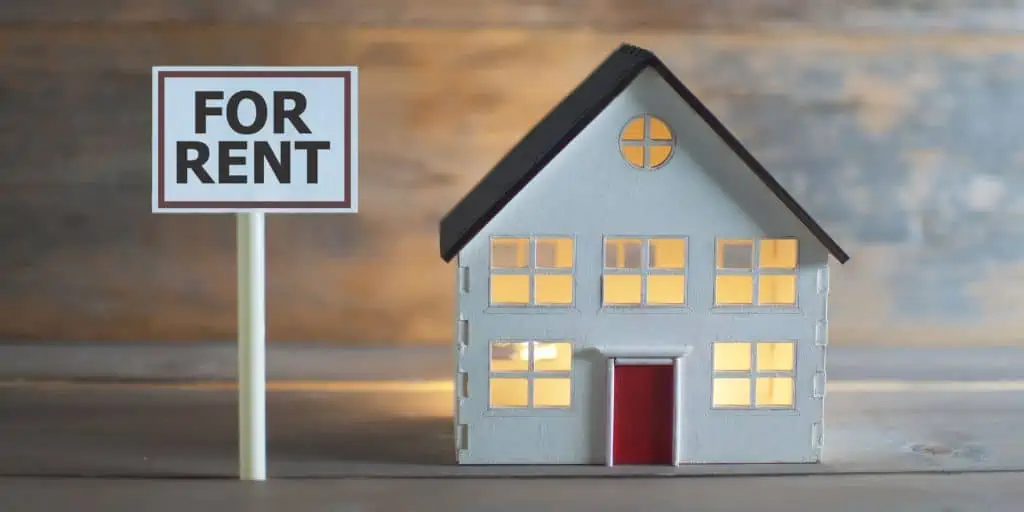What Is Occupancy Rate?
Why Is Occupancy Rate Important?
Knowing the occupancy rate of a property can help property owners, managers, and potential buyers determine several essential metrics.
- Comparative analysis: Occupancy rates allow investors to determine the supply and demand of available space for similar properties nearby. They may use this data to adjust their rent price based on the supply in the vicinity.
- Cash flow analysis: An investor looking to buy an income-producing property may look at occupancy rates to estimate the property’s cash flow[1]. Since the occupancy rate implies how many tenants are paying for their rental units, any property with a high occupancy rate indicates adequate demand based on the current price. In some cases, a high occupancy rate may suggest a rent increase.
- Performance analysis: Property managers and landlords can use occupancy rates to find holes in their management, marketing, or maintenance and adjust accordingly. In general, higher occupancy rates mean the property is well-managed and well-maintained[2]. Conversely, the opposite is true for properties with low occupancy rates[3].
Besides commercial real estate, occupancy rates also gauge the performance of hospitals, hotels, residential areas, senior housing units, office buildings, and even cities. Hotel owners, and the hotel industry in general, consider occupancy as an important metric. In addition, economists calculate occupancy rates to determine employment and market conditions, especially in real estate.
How to Calculate Occupancy Rate
An occupancy rate compares the number of rented units to the number of available units.
Here is the basic occupancy rate formula[4]:
Occupancy Rate = (units occupied / units available) x 100
Here are some examples to show how one can get the occupancy rate for a rental property:
- Apartment buildings: An apartment building has 375 units. 225 of the units are rented out over six months. To calculate the occupancy rate, divide 225 by 375, and multiply the result by 100. In this case, the apartment building has an occupancy rate of 60% (for six months).
- Hotels: A hotel has 250 rooms, 200 occupied by paying guests over 30 days. The hotel’s occupancy rate for that period is 80%.
- Office spaces: A commercial building has 15,000 square meters of available office space for rent. By the end of a year, 7,000 square meters of that building are leased out. The occupancy rate of the commercial building for that period is 46.67%.
When looking at an income-producing property, investors can calculate occupancy rates to determine its financial health from one of many angles.
For example, a property that can be rented out for $20,000 a month but only occupied for one month every year will have a lower rental income than a property that can be rented out for $2,000 a month but is occupied for 12 months every year.
This illustrates how the number of available rooms is weighted against the income from occupied rental units. Therefore, even using the same occupancy rate formula, different living facilities and rentals will have to gauge other metrics to determine their success.
What Factors Affect Occupancy Rate?
Different market factors can impact occupancy rates for rental properties. For example, weather disturbances, special events, and so-called “acts of God” are some of the most unpredictable factors that may drastically affect occupancy rates[5], usually negatively.
On the other hand, prime location and desirability are two factors that correlate to higher occupancy rates.
Pricing is always a key factor, as lower rates generally align with fewer available rooms or units. The property’s condition and good property management may also help increase its occupancy rate[6].
Finally, market conditions may influence occupancy rates. For instance, supply and demand, growth of new construction in an area, and economic trends like unemployment directly affect the number of available rental units[7].
Vacancy Rate vs. Occupancy Rate
The other side of this coin is the vacancy rate or the percentage of all available units in a rental property[8].
Vacancy rates are directly opposite to occupancy rates. This rate is calculated using the same formula, except instead of using occupied units as the dividing number, one uses the number of vacant units[9].
For example, if an apartment building has 500 units available and 200 are vacant, then the property’s vacancy rate is 40%.
Property owners and managers track and evaluate the vacancy rate over time and use the insights to figure out ways to keep their properties rented more consistently. By calculating and interpreting vacancy rates, investors can make the right decisions about better managing and improving their rental properties[10].
Investors and managers can use vacancy or occupancy rate figures in their calculations. For instance, a hotel with 10 available rooms out of 100 can either calculate using its 10% vacancy rate or the 90% occupancy (90 occupied rooms).
Takeaways
- Occupancy rate measures the percentage of rented or used space in an income-producing property.
- Identifying and interpreting occupancy rates are important for investors because it helps them analyze similar properties or draw a picture of the property’s cash flow.
- To calculate the occupancy rate, the investor needs to divide the number of occupied units by the number of available units and multiply the resulting number by 100.
- Higher occupancy rates are generally more attractive.
- Vacancy rates are the direct opposite of occupancy rates.
Sources
- Chen, J. (2020.) Occupancy Rate. Investopedia. Retrieved from https://www.investopedia.com/terms/o/occupancy-rate.asp
- Hotel Tech Report. (2022.) What is an Occupancy Rate? Real Estate’s Core KPI Explained. Retrieved from https://hoteltechreport.com/news/occupancy-rate
- Assets America. (2019.) Occupancy Rate – Everything You Need To Know. Retrieved from https://assetsamerica.com/occupancy-rate/
- Thakur, M. (n.d.) What is the Occupancy Rate? WallStreetMojo. Retrieved from https://www.wallstreetmojo.com/occupancy-rate/
- Wisse, M. (2022.) What is the occupancy rate (OCC) and how to calculate it? Oaky. Retrieved from https://oaky.com/en/blog/occupancy-rate
- Harris Evolution. (2021.) 5 Factors That Impact Office Occupancy Rates. Retrieved from https://www.harrisevolution.com/our-news/5-factors-that-impact-office-occupancy-rates
- Lloyd-Jones, A. (2008.) The Prognosis for Occupancy and Average Rate in a Slowing Economy. HVS. Retrieved from https://www.hvs.com/article/3223-The-Prognosis-for-Occupancy-and-Average-Rate-in-a-Slowing-Economy
- Steinberg, S. (2022.) Vacancy Rate: What It Is And How To Calculate It For Your Rentals. Rocket Mortgage. Retrieved from https://www.rocketmortgage.com/learn/vacancy-rate
- Ugazu, Y. (2019). Learn how to calculate vacancy rate for rental property. Mashvisor. Retrieved from https://www.mashvisor.com/blog/how-to-calculate-vacancy-rate/
- Rohde, J. (2021.) What is vacancy rate & why is it important to investors? Roofstock. Retrieved from https://learn.roofstock.com/blog/vacancy-rate







